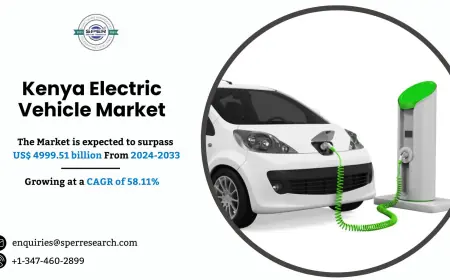Monetize Your Financial Content Without Compromising User Experience
This guide explores proven, publisher-focused strategies that help monetize finance sites while ensuring that content remains valuable, authentic, and user-first.
Running a successful finance site isn’t just about sharing smart money tips or investment strategies — it’s also about turning your expertise into revenue. But how do you monetize a finance site without compromising the trust of your readers or crowding the page with annoying ads? In today’s competitive publishing space, finance content creators must strike a balance between monetization and maintaining high editorial standards. This guide explores proven, publisher-focused strategies that help monetize finance sites while ensuring that content remains valuable, authentic, and user-first.

The Publisher’s Dilemma: Revenue vs. Reader Experience
When it comes to finance site monetization, publishers often find themselves at a crossroads. Display too many ads or push irrelevant offers, and you risk driving away your loyal audience. Play it too safe, and you leave money on the table.
The real challenge lies in monetizing smartly — building consistent revenue streams without damaging your site’s credibility. Fortunately, it’s possible to achieve both if you focus on user-aligned strategies and relevant financial offerings.
Understanding Your Audience’s Intent Before Monetizing
Before you implement any monetization method, it’s crucial to understand your audience's behavior. Are your readers searching for budgeting advice? Are they high-net-worth individuals looking for investment ideas? Or perhaps they’re beginners in personal finance?
By analyzing user intent and traffic sources, you can align your finance traffic monetization efforts with what your readers genuinely want. The more aligned your monetization strategy is with your content, the higher your engagement — and earnings.
Native Advertising: The Most Trusted Revenue Stream
One of the most seamless ways to monetize a finance site is through native ads. These are ads that blend into your site’s content without looking disruptive. When used correctly, native ads can drive strong click-through rates and generate consistent income.
For instance, a personal finance blog could feature a native ad recommending a budgeting app or robo-advisor. These types of promotions feel more like helpful suggestions than sales pitches, making them ideal for publishers who prioritize trust.
Native ad platforms like 7Search PPC also allow niche targeting, enabling finance blogs to monetize their pages with ads that match reader interest. This enhances the user experience while boosting your site’s finance blogs revenue.
>>>Earn with Every Visitor—Start Monetizing Instantly<<<
Affiliate Programs That Complement Financial Content
Affiliate marketing is a natural fit for finance site monetization. The key is selecting affiliate programs that closely relate to the financial topics you cover. For example:
- A blog about debt management could promote credit repair services.
- A site focused on investing could recommend platforms like stock brokers or ETFs.
- A tax tips article might include links to tax filing software.
Each of these strategies turns your existing content into a revenue engine. When your affiliate links are embedded naturally into useful articles, readers don’t feel like they’re being sold to — they feel like they’re being helped.
To keep monetization ethical and effective, always disclose affiliate relationships and never promote a product you wouldn’t recommend to a friend.
Email List Monetization Without Being Spammy
Email newsletters offer a private channel between you and your readers — and they’re an underused tool in the monetize finance site playbook. Once you’ve built an email list, you can introduce monetization opportunities without hurting engagement.
Here’s how:
- Promote your own digital products, like eBooks or financial planners.
- Introduce affiliate offers through editorial-style product reviews.
- Partner with sponsors to feature relevant financial brands.
Since your email subscribers already trust you, they’re more likely to convert. Just be sure to deliver value in every email and never overload your audience with promotional content.
Selling Premium Finance Content or Memberships
Not all content should be free. If you produce high-value financial insights — such as market research, in-depth investment analysis, or financial planning tools — consider putting some of it behind a paywall.
You can use platforms like:
- Patreon for fan-funded memberships
- Substack for premium email newsletters
- Memberful for subscription content access
By creating gated content, you reward your most engaged readers and add a dependable revenue stream. Many successful finance publishers use this method to boost finance blogs revenue without showing a single ad.
Sponsored Posts and Brand Partnerships
Collaborating with fintech brands or financial service providers can be a lucrative move. Sponsored posts — articles paid for by a brand — give you a way to share in-depth content while earning income.
To maintain editorial integrity:
- Only accept sponsored content from brands you genuinely respect.
- Be transparent with your readers about sponsored content.
- Create content that still educates and informs, even if it's paid.
This strategy strengthens finance traffic monetization by aligning with companies looking to reach your audience, all while keeping your site content-rich and trustworthy.
Programmatic Ads That Don’t Kill the User Experience
While display ads have a reputation for being disruptive, modern programmatic ad platforms offer more refined targeting and better control.
If you're using programmatic ads:
- Keep ad density low on mobile
- Use lazy loading to speed up site performance
- Stick to trusted ad networks with high-quality financial inventory
Done right, programmatic ads can contribute to finance site monetization with minimal intrusion, especially when combined with other income strategies.

Selling Your Own Products and Services
Some of the most successful finance sites monetize by offering their own digital products:
- Budget templates
- Investment spreadsheets
- Online courses
- Consultation services
These products often perform better than affiliate promotions because they reflect your brand’s unique expertise. Whether you’re an individual finance coach or a larger publisher, owning your monetization channel puts you in control.
The Role of SEO in Long-Term Monetization
None of the above strategies will succeed without steady traffic. That’s where SEO comes in.
To boost your finance blogs revenue, make sure your content is:
- Optimized for search intent
- Fast-loading and mobile-friendly
- Rich with relevant internal links
- Consistently published and updated
Monetizing your site is a long game. The better your SEO, the more consistent your traffic — and the more dependable your income.
Using PPC to Monetize Through Traffic Arbitrage
If you have the ability to acquire traffic through low-cost paid ads, you can arbitrage it by monetizing through affiliate offers or native ads. Finance publishers often use finance traffic monetization this way.
Buy traffic from platforms like 7Search PPC, drive it to a landing page featuring high-earning affiliate offers, and profit from the difference. This approach requires testing and optimization but can generate massive results when dialed in.
Avoiding Pitfalls: What Not to Do When Monetizing
Even the best publishers can fall into traps. Avoid these mistakes:
- Using irrelevant ads that confuse readers
- Pushing payday loans or risky financial schemes
- Monetizing aggressively on beginner-level content
- Failing to disclose sponsored or affiliate content
Remember, your readers trust your insights. Your revenue model should enhance that trust, not erode it.
Balancing Monetization With Reader Loyalty
Ultimately, successful finance site monetization hinges on how well you maintain audience trust. Readers who feel respected are more likely to return, subscribe, click, and convert.
Here’s the formula:
- Quality content that solves real problems
- Monetization that aligns with reader needs
- Ethical practices with clear disclosures
When you put your readers first, monetization happens naturally — and sustainably.
Conclusion
You don’t have to choose between making money and serving your audience. With the right strategies, you can monetize your finance site in a way that strengthens your brand, grows your revenue, and retains your loyal readership. From native ads and affiliate partnerships to email monetization and premium content, the possibilities are vast — and they don’t have to cheapen your brand. Focus on value, relevance, and trust, and your monetization strategy will evolve into a sustainable business.
What's Your Reaction?
 Like
0
Like
0
 Dislike
0
Dislike
0
 Love
0
Love
0
 Funny
0
Funny
0
 Angry
0
Angry
0
 Sad
0
Sad
0
 Wow
0
Wow
0

















































